EdTech
School Management App Development: How to Make School Management Smarter

School administration, as any seasoned professional would attest, is remarkably complicated, a puzzle with seemingly incongruous pieces needing to ingeniously fit together. From managing logistics and keeping tabs on student performance, to harmonizing schedules, it's far from an ordinary nine-to-five.
In K12 schools, complexity increases due to the need to manage even more diverse infrastructure, adapt to shifting educational policies, maintain open communication with all stakeholders, and ensure up-to-date tech infrastructure. These challenges amplify the responsibilities of administrations amid the regular tasks of having an educational institution run smoothly.
This realization has given birth to the pressing need for smarter, leaner, and more efficient school management – a path to change paved by school management app development. But can these technologies truly transform your school into a smoothly operating, cohesive digital ecosystem?
We examine 6 such notable EdTech tools, each promising to rewrite the complex script of school management for good.
Key challenges faced by school management
The minute one steps into the world of school management, it's like a Swiss Army knife of responsibilities. From calming the anxieties of first-graders to handling the school's financial health, a school administrator's role is nothing short of managing a mini-cityscape.
It's about keeping thousands of components running smoothly together, through any obstacles or unpredictable hurdles. The school administration's challenge lies in managing all these aspects comprehensively and efficiently, preparing the institute to mold young minds who will shape the future.
Tasks like attendance management may seem simple; the age-old roll-calls that take just a few minutes of class time. However, zoom out to see larger schools with hundreds, if not thousands, of students. Individually verifying each student's presence or absence and further communicating it to parents escalates into a Herculean effort.
With student information management, the challenge multiplies. Maintaining accurate and confidential student records – serving as crucial indicators of current performance and future prospects – demands a perfect balance of precision and privacy.
Similarly, managing teaching staff and planning their professional development entails acknowledging individual teaching styles, strengths, and weaknesses, along with planning their professional development paths. Such a task requires more than manual methods; it necessitates tools that can adapt, remain precise, and swiftly manage different variables.
This already may seem like a lot, but does not stop there:
- A vital facet is forging open and trust-based communication with parents. Regular reports on school happenings and student progress foster transparency and facilitate active parental involvement..
- Financial management is another critical dimension. It involves meticulously tracking income sources and expenditures to ensure a balanced budget, and strategizing effective resource management for long-term institutional stability and quality education.
- The responsibility encompasses facility management too, maintaining secure and conducive learning environments. This necessitates consistent oversight of the school infrastructure, utilities, and safety standards.
- Logistics, especially around student transportation, presents unique challenges. Administrators must warrant an efficient system ensuring reliable commutes, punctuality, vehicle safety, and clear parent communication pertaining to transport schedules and changes.
- Finally, curating and implementing a dynamic agenda of extracurricular activities is essential for comprehensive student development. This involves intricate planning, judicious resource management, and ensuring effective integration with academic commitments.
Is school management app development the answer for K-12 schools?
Technology has written a new narrative for school management, bringing in efficiencies, automation, and data-driven insights. It brings about changes in the day-to-day tasks, liberating educators and administrators from administrative chores, and allowing them to focus more on students and pedagogical innovation.
Automated attendance tracking has made that possible and a reality in many schools across the globe. Real-time tracking of school buses, not just improving fleet efficiency but ensuring a sigh of relief for worried parents, too. Or take financial planning and budget allocations – no longer driven by guesswork, but by strategic data-driven insights and many many other great possibilities.
Most important of all is connected and accessible at the tap of a finger, making your school operations smooth and efficient.
All of these significant benefits are leading the U.S. K-12 schools to spend between $26 billion and $41 billion annually on education technology. Since 2020, EdTech usage in K-12 schools has surged 99%. The potential savings for school districts are tremendous; is estimated that up to $3 billion could be saved from the $13.2 billion spent on EdTech annually.
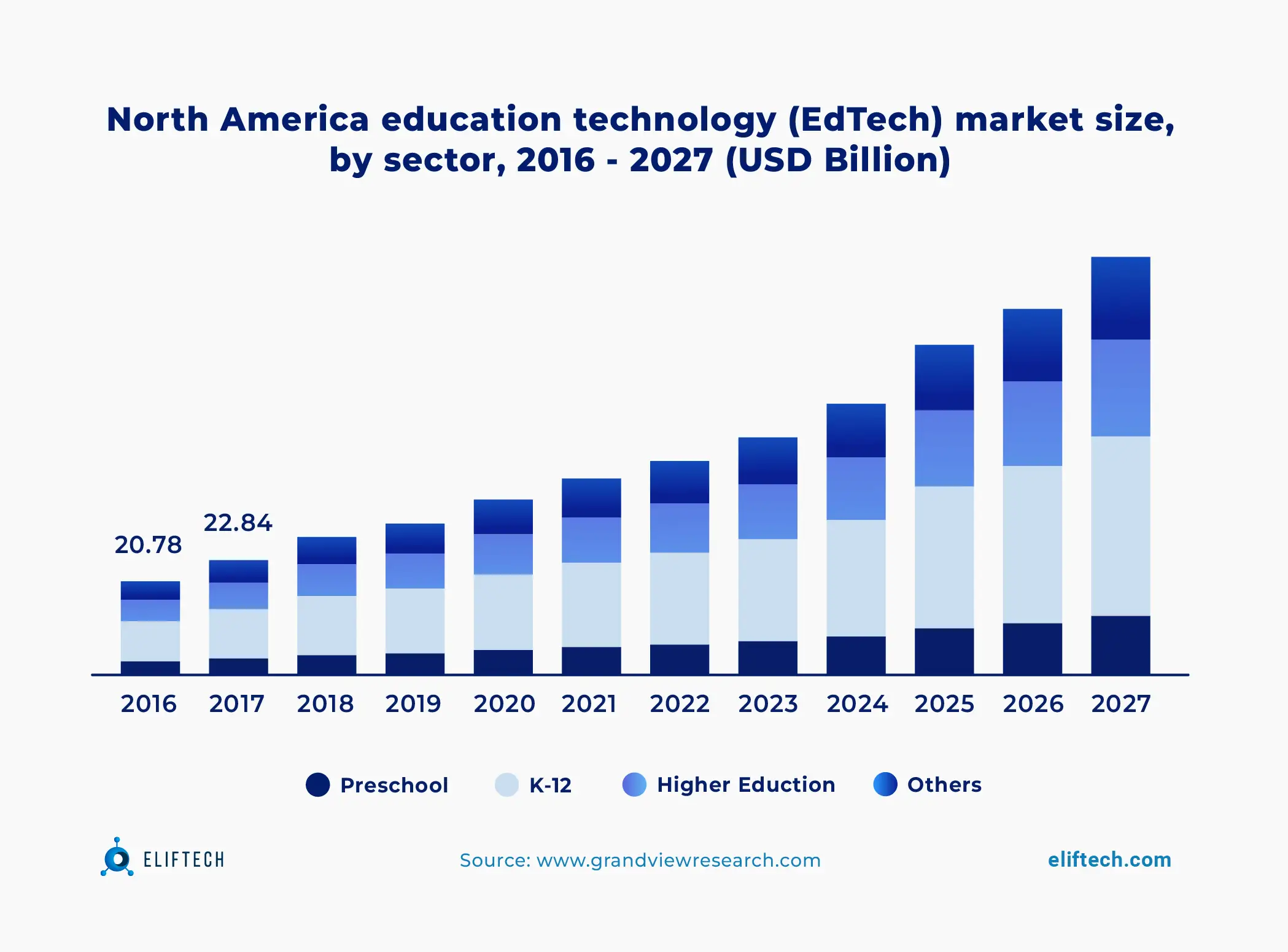
When it comes to the distribution of these funds, the software segment in EdTech leads the market in 2023, capturing a significant revenue share. Much of this embracing stance from education leaders comes from the flexibility of software deployment, particularly via the cloud. The Cloud-Based segment held the top spot in terms of deployment in 2023. As per predictions from IT managers, cloud-based tools are expected to witness 70% growth in the coming three years. And there is no wonder as with the cloud, administrators can effectively handle various school management tasks on a single platform, resulting in significant time and cost savings.
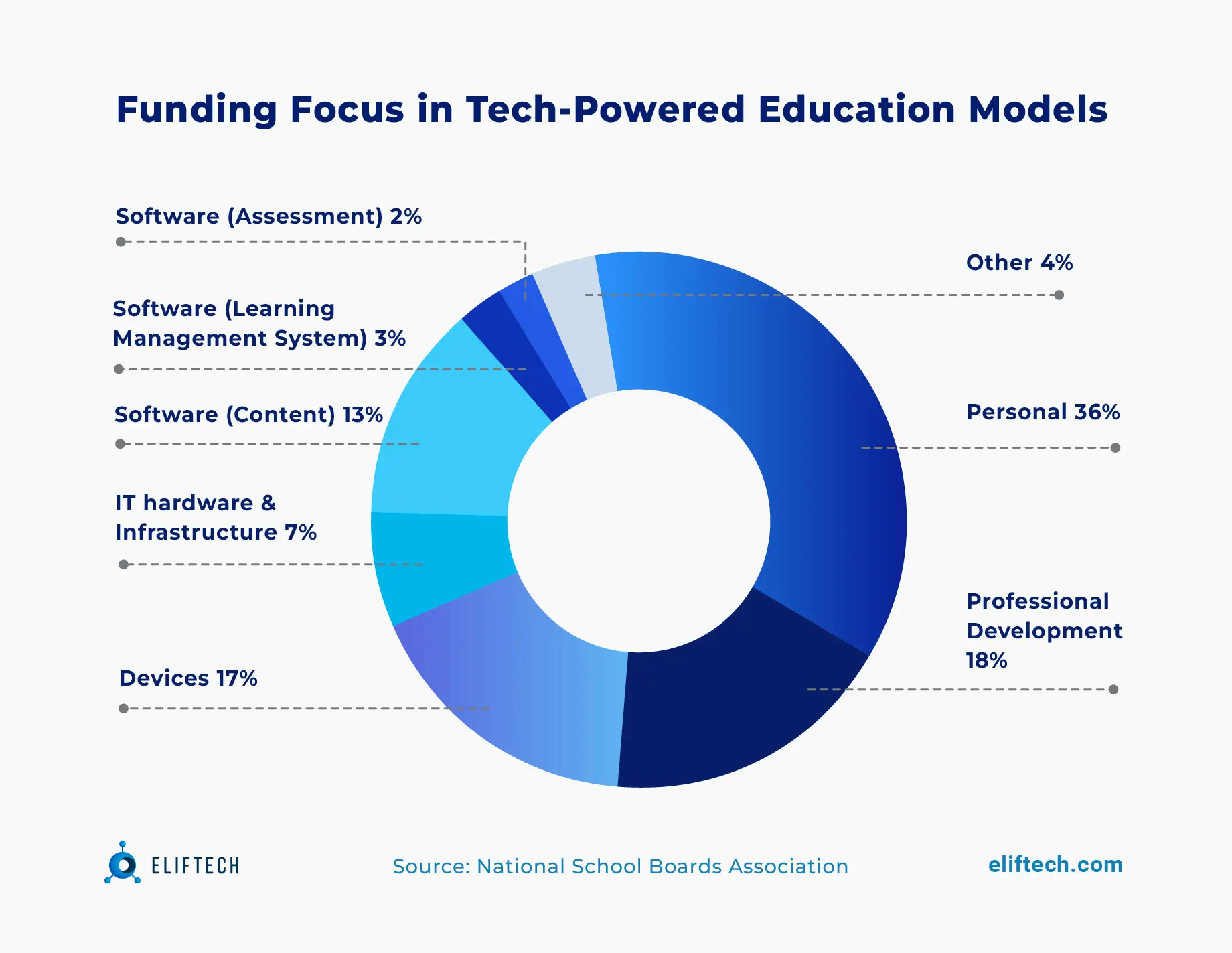
Technology challenges K-12 schools face
If technology and EdTech provide such powerful solutions and are vital for change, why aren't all schools fully digitalized yet? What is holding them back? Is it a shortage of resources, limited budgets, gap in tech skills, or resistance to change? Many things, in fact.
Limited resources
Even when schools allocate a substantial budget for technology, there can still be a perceived lack of sufficient resources due to the constantly evolving nature of EdTech. Schools must balance numerous priorities, such as salaries, facilities, and technology expenses, within strict budgets. Implementing cutting-edge technology can be costly, including hardware, software, network infrastructure, and staff training. Additionally, the rapid pace of technological advancements may require increased investments and continuous updates for schools to remain competitive, further stretching the available funds. These resource limitations make the wide-scale deployment of digital transformation a daunting task for schools, despite significant allocated budgets for technology.
2. Diverse infrastructure in schools
The full deployment of EdTech solutions also faces difficulties due to the varied systems and technologies within schools. This includes a wide range of devices, operating systems, software applications, and network configurations used in different educational institutions. Schools can end up juggling 10-15 disparate systems, making it challenging to establish a centralized view and complete understanding of their operations.
Moreover, implemented solutions must cater to existing curricula and pedagogical methods, which may require substantial customization and flexibility on the part of the technology. This complexity further compounds the challenge: educators must not only understand and deploy new technologies effectively but also reshape them to fit various teaching styles and syllabi.
The multitude of platforms can lead to compatibility issues and operational inefficiencies. Thus, bridging this technological disconnect presents a significant challenge. Schools need to ensure the seamless integration of these different systems, fostering efficient communication to optimize the benefits of their EdTech initiatives.
3. Outdated technology and legacy systems
Outdated technology and legacy systems can hinder schools from fully adopting and implementing EdTech solutions. This is especially prevalent considering that only 30% of K–12 respondents reported being well-positioned to modernize their infrastructure. These challenges stem from factors like limited budgets, inadequate staff resources, and lack of executive support.
Organizations that continue to rely on outdated technology and legacy systems can face problems such as poor integration with new systems, increased security vulnerabilities, and reduced efficiency in operations. For instance, a school using an old record-keeping system may struggle to integrate it with newer software tools, which could lead to increased manual work, errors, and time-consuming operations that could have been automated with an up-to-date system.
4. Lack of tech expertise
At the helm of this digital movement is the invaluable ed-tech leader. In an interview for EdTech Magazine, ATLIS director of education and content, Ashley Cross, characterizes the role of an ed-tech leader as akin to a "Lone Ranger". This role, depending on the school's size or resources, could involve everything from infrastructure management to curricula integration.
Christina Lewellen, ATLIS Executive Director, further expands on this role, highlighting that an ed-tech leader's responsibilities encompass not only facilitating technology for learning but also managing the "technology of a business, running a school". These insights emphasize the broad and intricate role of ed-tech leaders in schools, navigating unique technology challenges while keeping the larger educational and business goals into consideration.
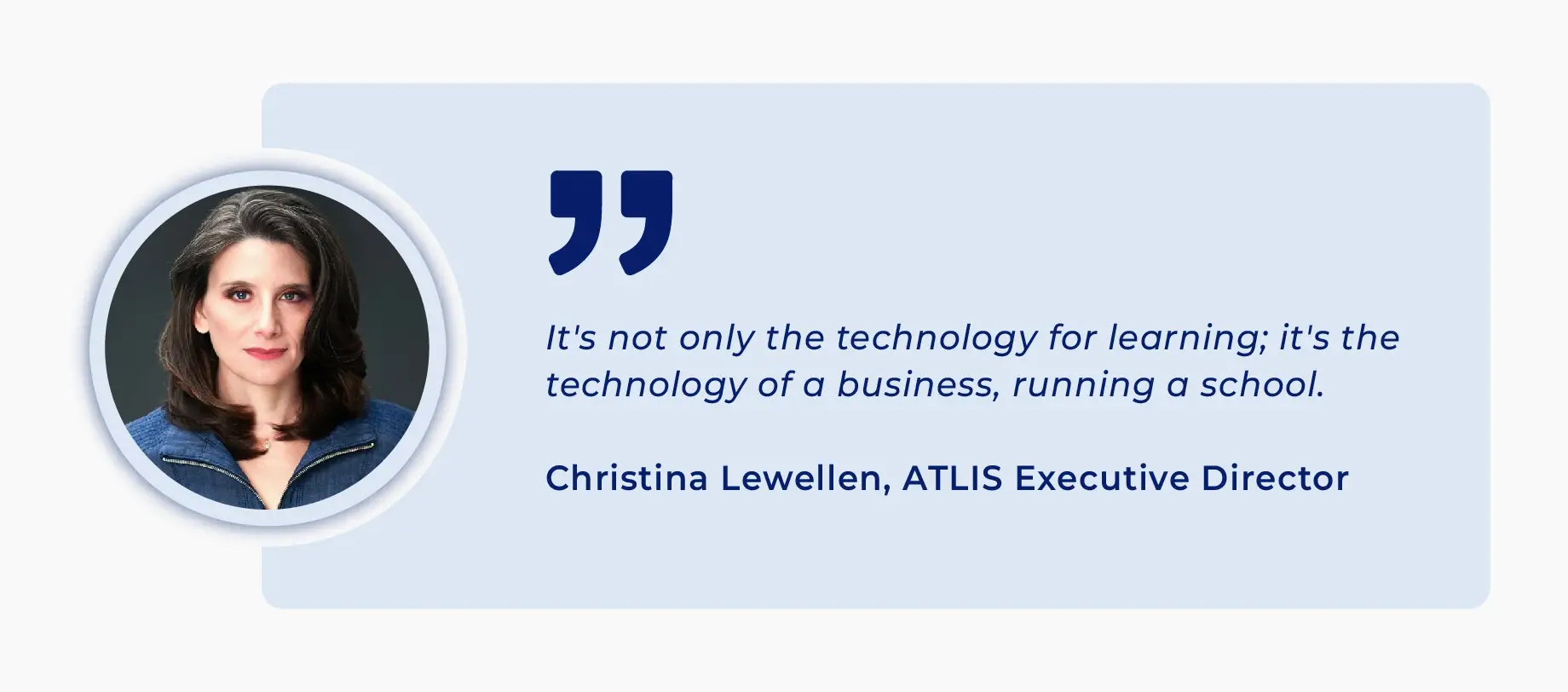
Indeed, the technology leader must manage numerous responsibilities and issues, ranging from implementing technology infrastructure to fostering a culture of digital literacy. Balancing budget constraints, addressing security concerns, and ensuring the smooth day-to-day operations of a school all fall within their purview. Adding a complex layer to their role is the fact that many ed-tech leaders (around 42%) do not hail from a conventional technology background. Instead, they transition from classroom teaching or school administration into these roles. Accordingly, these people often miss competencies in technology implementation and management.
Keith Krueger, the CEO of CoSN (a professional association for K-12 tech leaders), emphasizes this adjustment challenge, stating, "Nobody comes into these jobs with all the skills they need." This comment underscores the steep learning curve and persistent skill gap issues faced by such leaders in executing their multifaceted responsibilities.
The hurdles may appear daunting, but it's important to remember that succeeding in this significant role means shaping the future of education.

6 school management app development solutions to make school management smarter
Many schools in the US have already embraced the wave of digital transformation to enhance the educational experience. For example, moving from traditional to digital payment systems for quicker transactions, introducing mobile applications for efficient note-taking, leveraging data analytics for informed decision-making, and using interactive whiteboards for engaging instruction.
Here are some of the most deployed technologies initiating this digital revolution in education:
Attendance monitoring systems
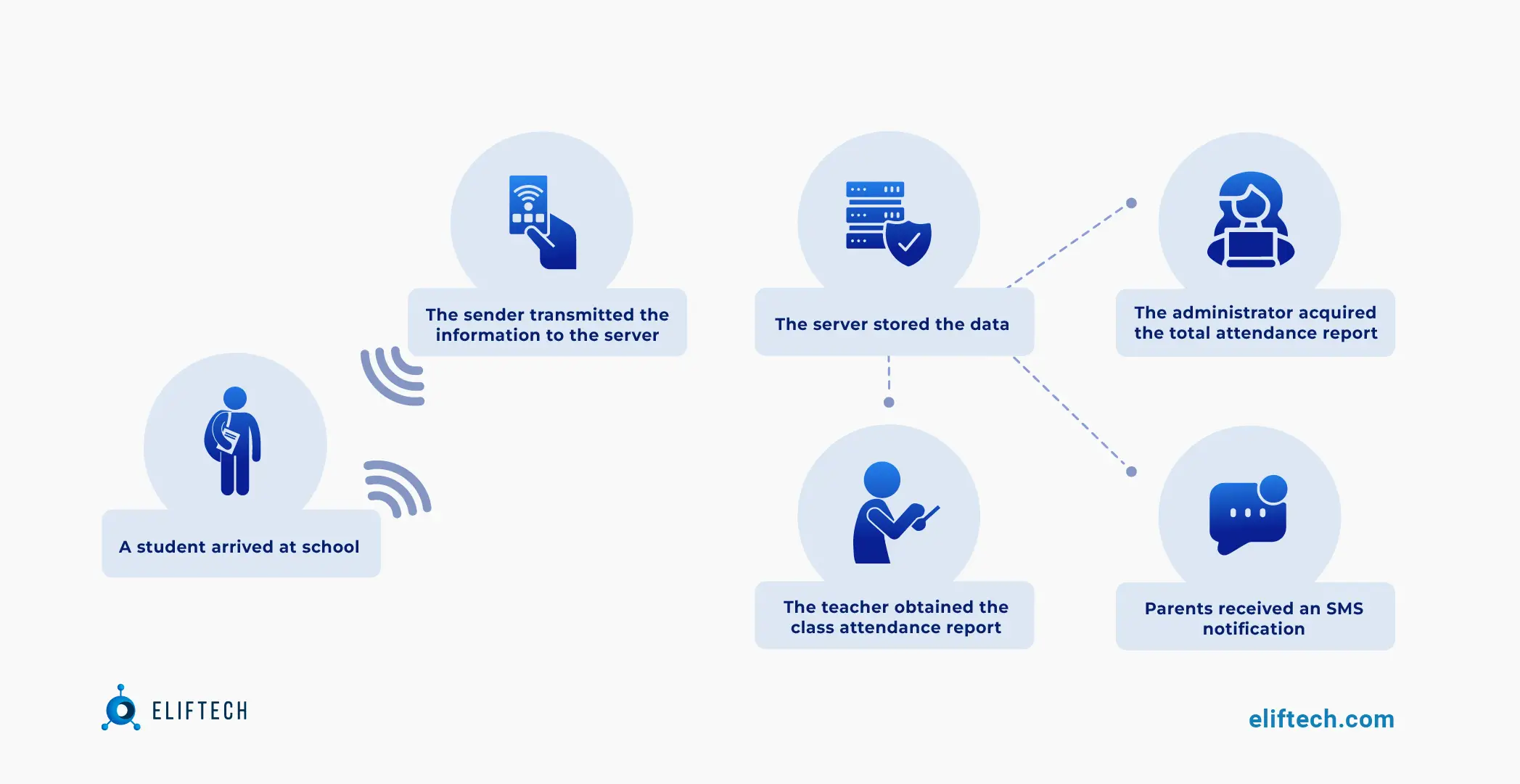
Among the array of smart tech solutions that schools are rallying around, attendance monitoring systems hold a peculiar charm. At first glance, they are digital replacements for traditional roll calls – a move towards efficiency and accuracy. But if you scratch underneath the surface, there’s a whole world of analytical potential these systems offer.
Here's how they work: Every day, as students check-in, the system logs their presence automatically. It can track late arrivals, early departures, and absences down to the minute. But more than just recording, it's storing and analyzing this data, and therein lies the magic.
With sophisticated analytics, the system can identify trends in student attendance over time. Is there a pattern of people skipping school on Fridays? Are students consistently late at specific times of the year? To the system, these patterns are like a blinking neon sign, impossible to miss. These insights could be invaluable for schools in making informed decisions, creating proactive attendance policies, and devising effective intervention strategies.
School bus tracking & fuel cost management systems
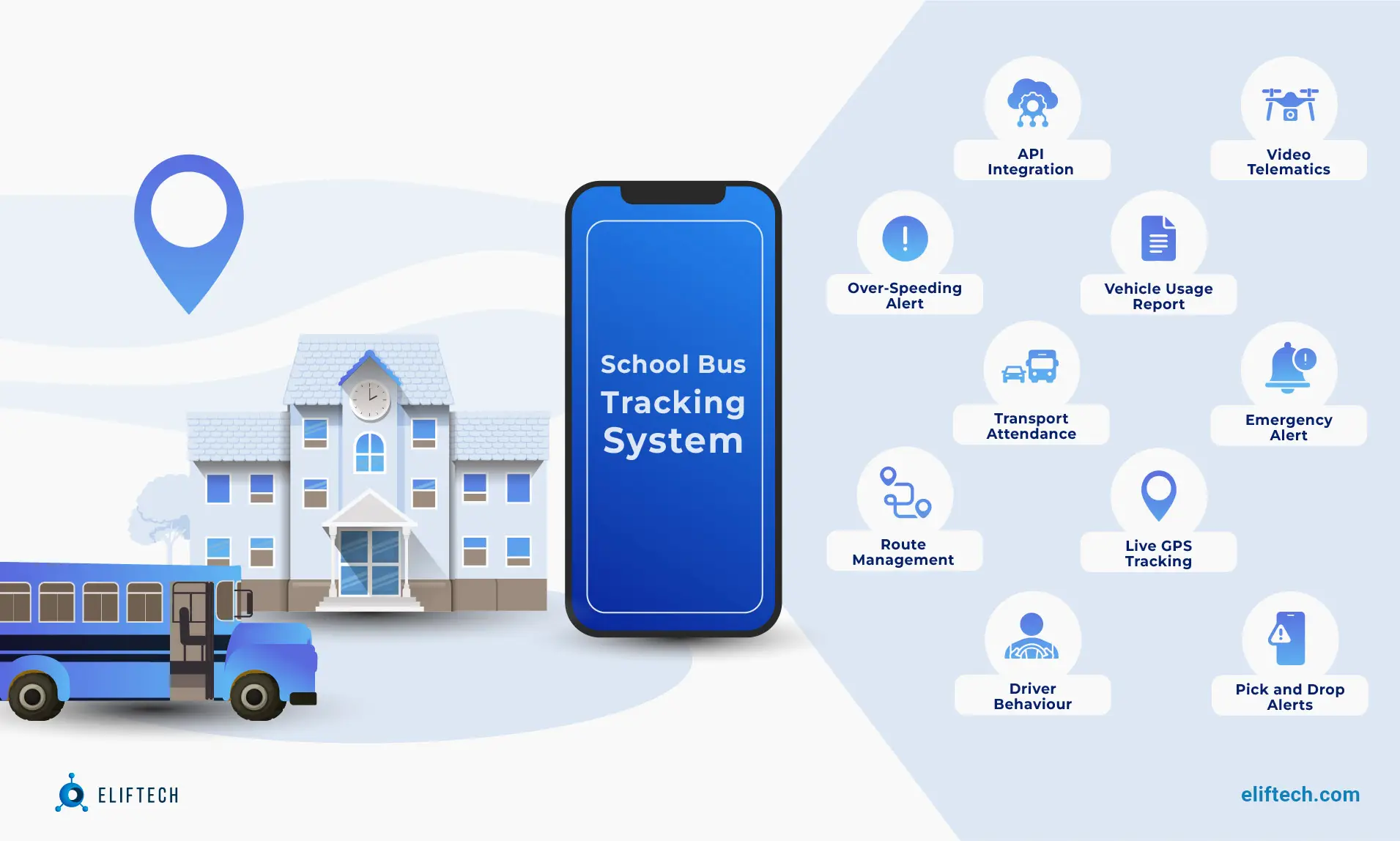
GPS-embedded school bus tracking systems have emerged as game-changers in the landscape of smart schools. Besides fortifying student safety, they offer remarkable benefits in logistics, aiding in optimal resource use.
Imagine this: a bus moves along a route, and every single second of that journey is tracked, logged, and analyzed. Real-time location data pours in, providing schools with pinpoint accuracy to track their fleet. Now, not only does this mean a safer ride for the students, but it's also an unbelievable resource optimization tool.
A standout feature embedded in these systems is fuel cost management. By diligently analyzing fuel consumption parameters like distance, route variations, idling time, and vehicle condition, schools are empowered to run their fleets more economically.
The systems generate comprehensive reports to highlight discrepancies or areas of improvement, such as inefficient routing or poor driving habits. By leveraging these insights, schools can improve operational efficiency and reduce costs.
Student information systems (SIS)
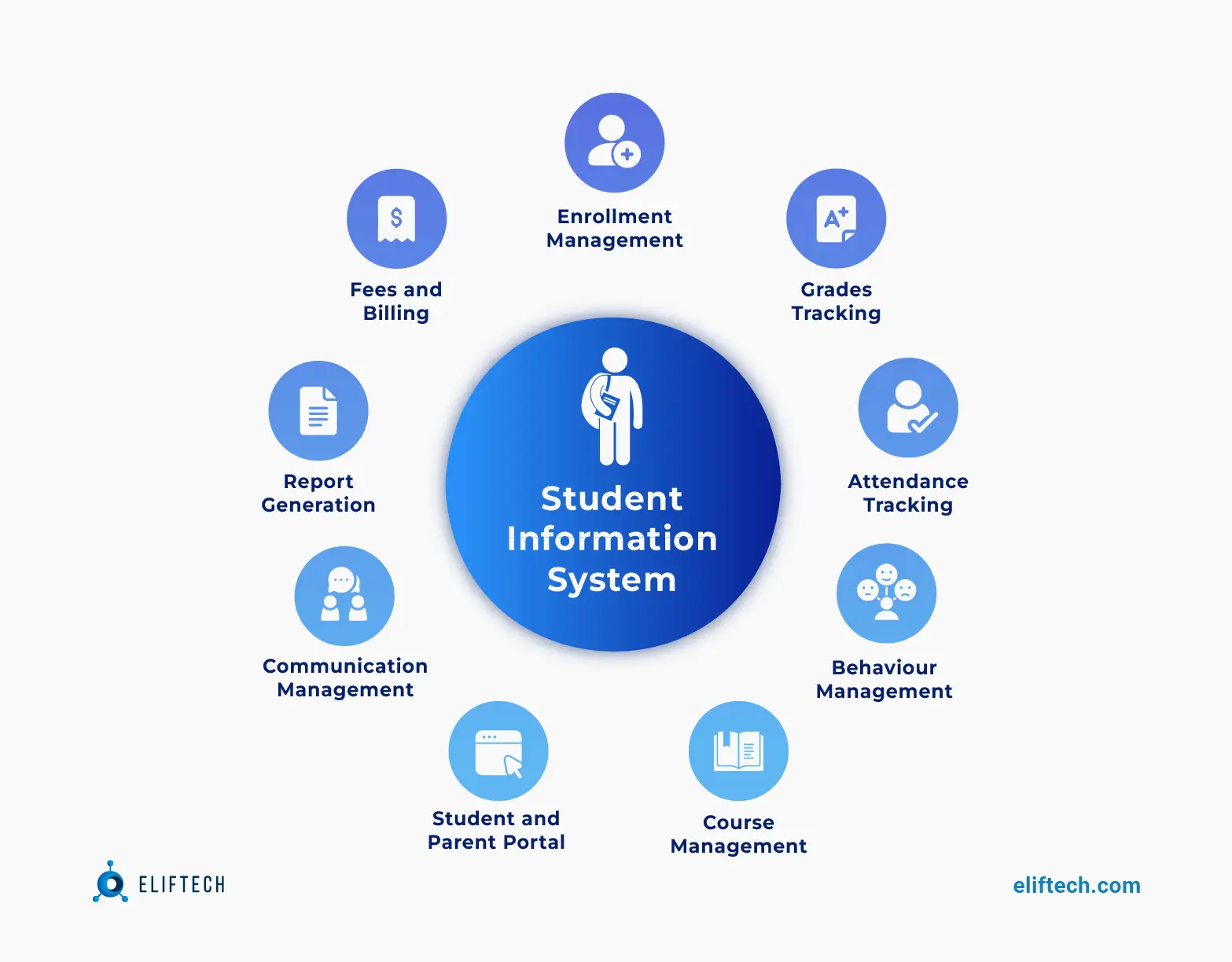
Picture this—endless spreadsheets filled with student data, all collated into one streamlined system, or what we call the Student Information System (SIS). The role of SIS in modern, tech-empowered schools, is nothing short of transformative.
The SIS wears many hats; it neatly organizes all student data from personal details, and attendance records, to grades and schedules. The busy office staff suddenly find their work more manageable, and parents receive valuable insights about their child's academic life right at their fingertips, all thanks to SIS.
But that's not the end of it. The SIS often includes analytical tools. Think of it as connecting the dots, taking seemingly unrelated information, and identifying interconnected patterns. Through these insights, we might find trends such as how regular attendance affects academic performance, enabling schools to create targeted interventions.
Learning management system (LMS)
Propelling the digital learning landscape in schools is the Learning Management System (LMS). With its capabilities akin to a virtual classroom manager, the LMS ensures a unified platform for a host of academic activities. From managing assignment submissions, curating online lessons, and promoting real-time student-teacher dialogues, to tracking progress, this system has got it all covered.
Here's a real-world example: A teacher’s friend discovered through LMS analysis that some of her students were struggling in specific areas. She used these insights to customize their learning experiences—proof of how LMS is reshaping education in a data-driven, personalized way.
Much like how an Attendance Monitoring System reveals attendance patterns, the LMS identifies individual progression and problem areas, facilitating the creation of student-centric learning paths.
Simply put, the LMS empowers educators to transcend conventional approaches, enabling them to harness multifaceted insights and fine-tune their teaching methodologies. Thus, an LMS plays a pivotal role in steering schools towards personalized, data-driven education paradigms.
Facilities management software for schools
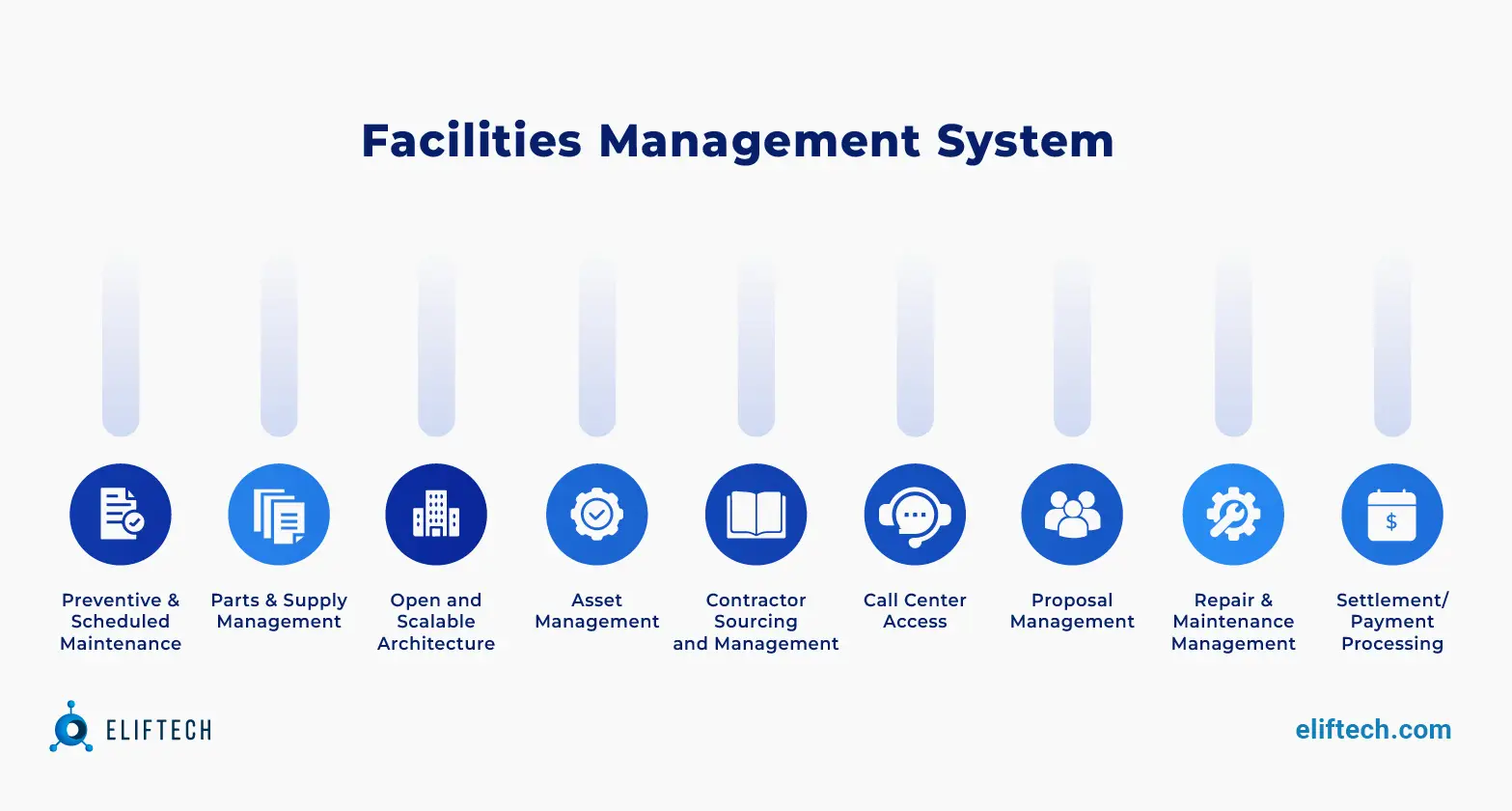
During a typical school, both academic and extracurricular pursuits keep the campus buzzing. This dynamic environment necessitates optimal use of spaces, efficient resource handling, and careful facility upkeep, all of which are domains under the purview of the facilities management software for schools. (FMS).
An FMS, designed to streamline tasks and foster a conducive educational environment, goes beyond simple maintenance scheduling or asset tracking. It's about crafting a functional, safe, and sustainable space for learning.
Invisibly, yet significantly, the FMS facilitates operations running smoothly, assisting in inventory management, maintaining health standards in the canteen, and employing predictive analyses for future needs.
Moreover, it's instrumental in handling classroom resources and routine repairs, ensuring classrooms vibrate with readiness for learning. And, it doesn’t stop there. The FMS doubles as a security sentinel, vigilantly monitoring all points of entry and exit.
School accounting system
One would be mistaken if they thought finance in schools was just about balancing credits and debits. School Accounting Systems have turned this premise on its head, enabling schools to pass the tedious number-crunching and enter a world of data-driven decision-making.
Once a complex niche filled with paperwork, school accounting has now become a structured, organized, and insightful task. Income, expenses, and budgeting forecasts can be tracked in real-time, analyzed, and visualized into comprehensible reports using these systems.
The impact? Huge. Trends in resource allocation, potential leaks in the funding system, and areas of monetary efficiencies – it's all just a click away. These insights are key for school management software development to make strategic decisions about resource allocation, funding, and shaping up financial plans for the school's future.
Abundance of choices, limited solutions: Why schools build custom EdTech software?
As we’ve already mentioned, every school possesses a unique blend of infrastructure, curricula, and pedagogical techniques. So, it's no surprise that a one-size-fits-all approach to technology just doesn't cut it when implementing digital transformations in schools. And perhaps this very notion sheds light on why schools' spending on professional tech services has skyrocketed recently compared to hardware and software that show almost linear growth.
If you peek behind the curtain at any school, you'll often find a complex web of legacy systems and outdated tech. These infrastructures make integrating off-the-shelf software a monumental, if not impossible, task. And let's be honest, many tech-savvy school leaders are stretched to the breaking point, leaving little time to navigate the ever-evolving world of educational technology.
Thankfully, a custom school management app development is riding to the rescue. With a primary focus on addressing a school's specific needs and quirks, these tailored software systems can slide seamlessly into the existing framework. Imagine having a solution that evolves and grows with you instead of holding you back.
The key to a successful custom solution is a partnership with dedicated professionals. These experts not only possess the technical know-how but also understand the unique challenges faced by schools. Plus, they see beyond the technology and can help manage the nuances of student data, faculty support, and administrative tasks.
Moreover, they might offer you consultancy services to highlight potential areas of improvement, and planning for seamless tech integration. They outline the right direction for technological advancement tailored to your school's unique needs. Looking for a partner, consider a consultation with EdTech software development experts who can assess your current infrastructure and guide you in the right direction on your EdTech journey.
